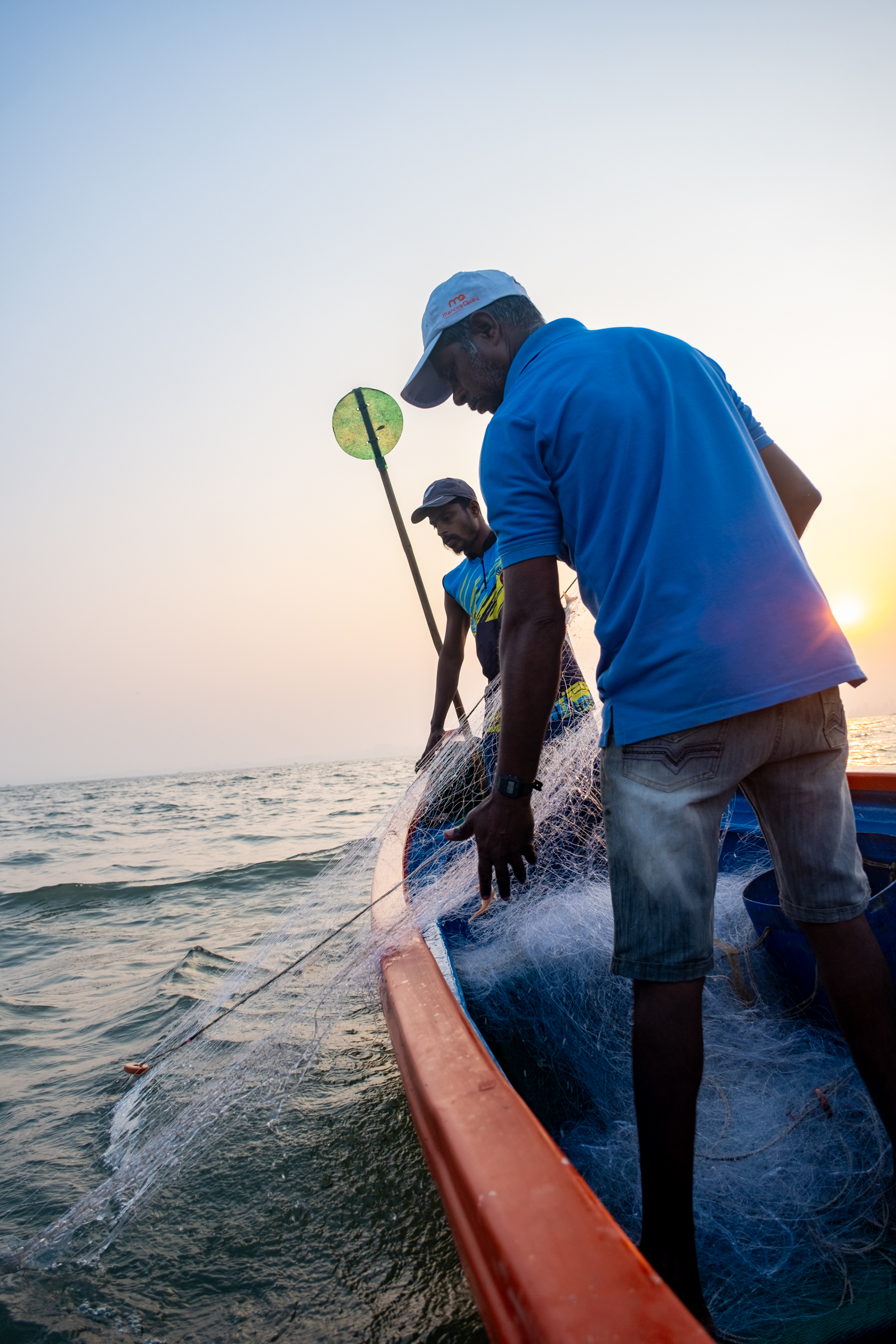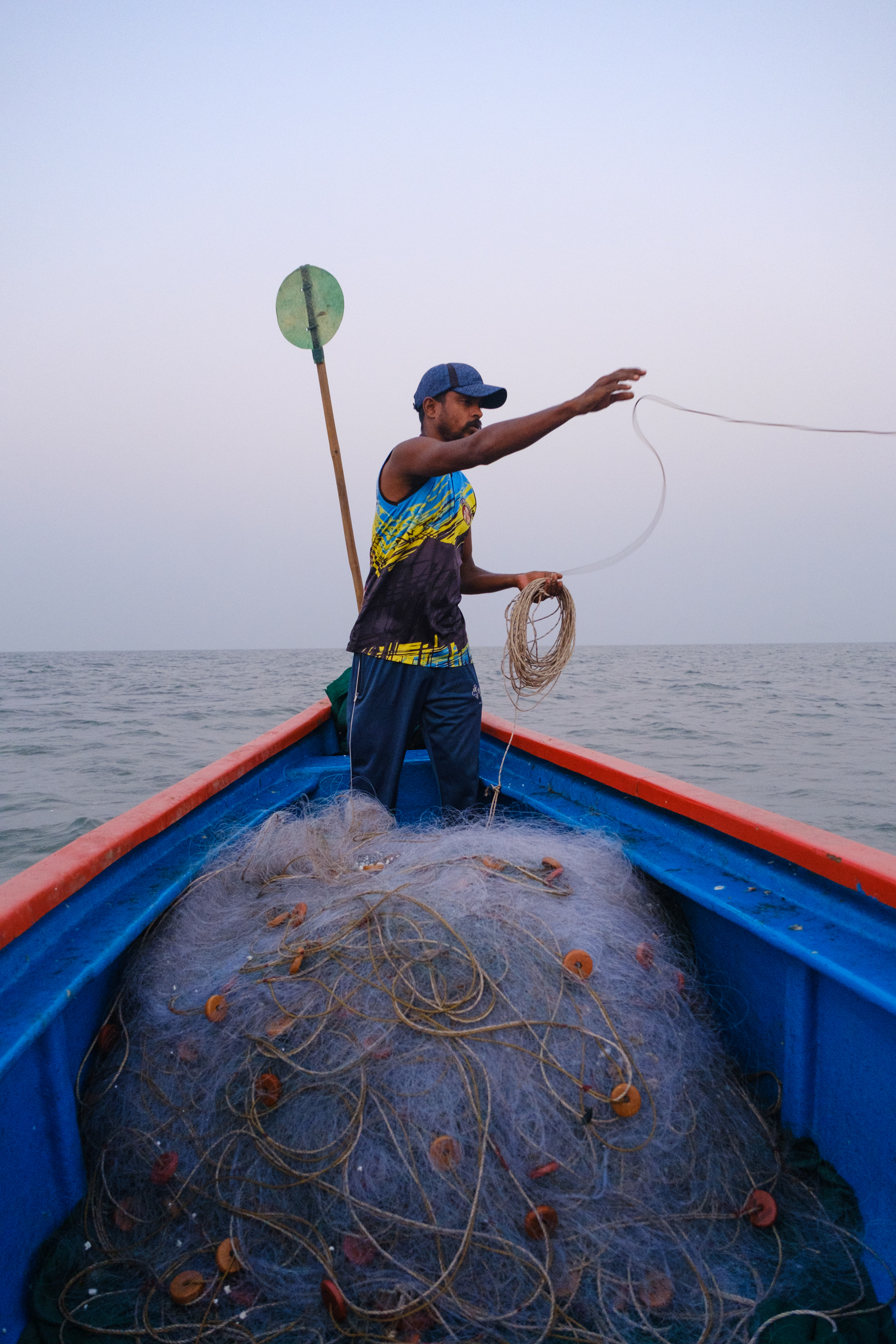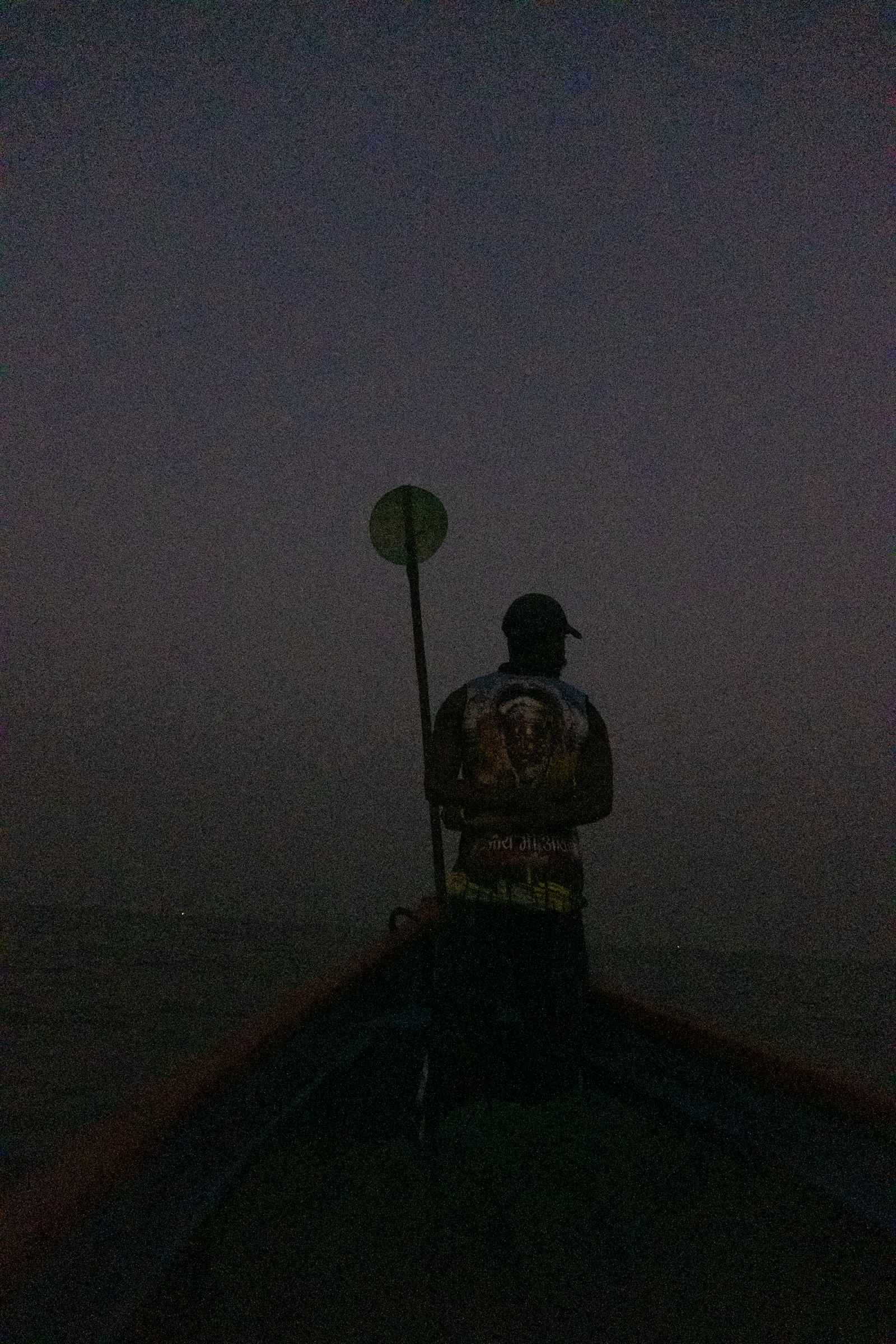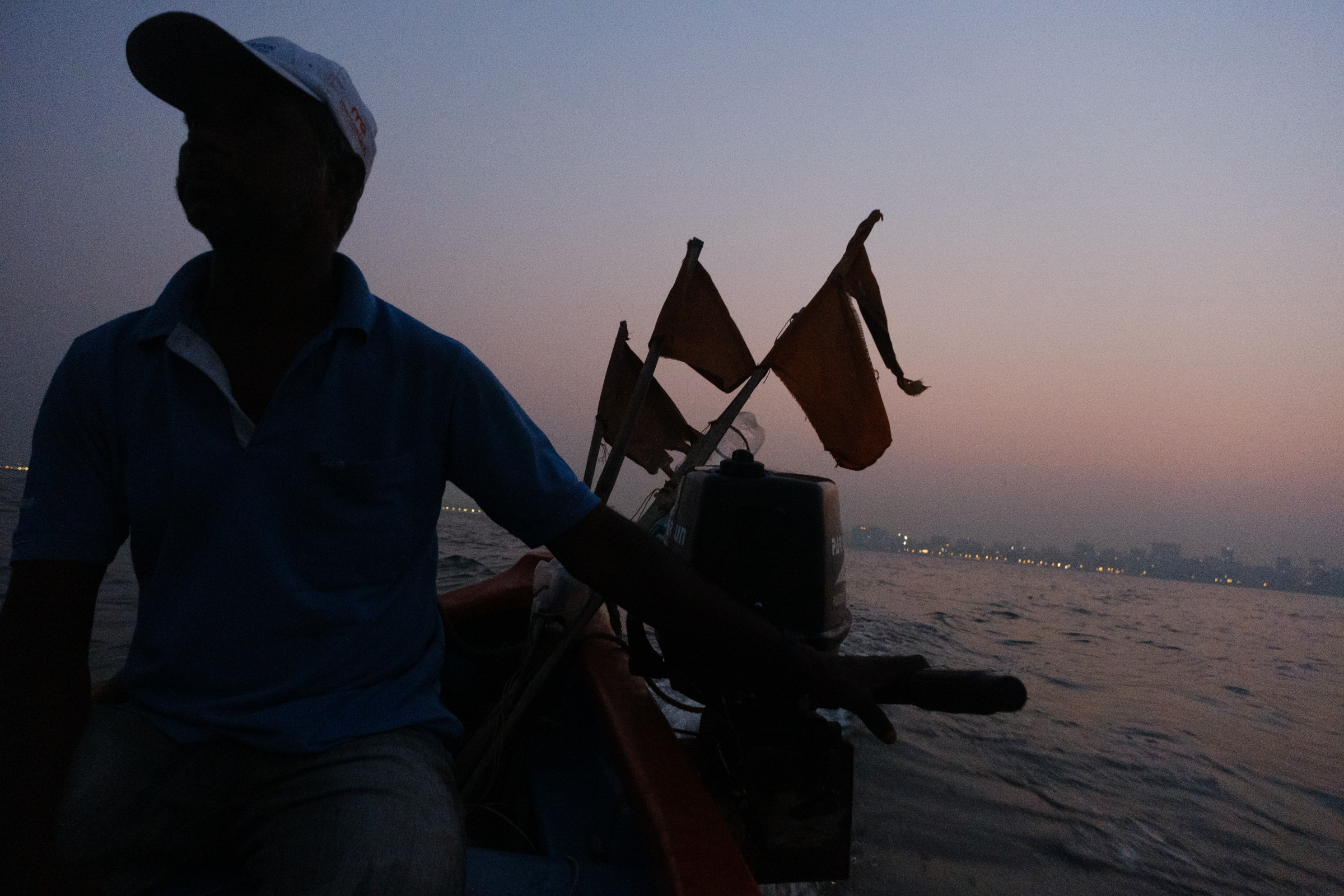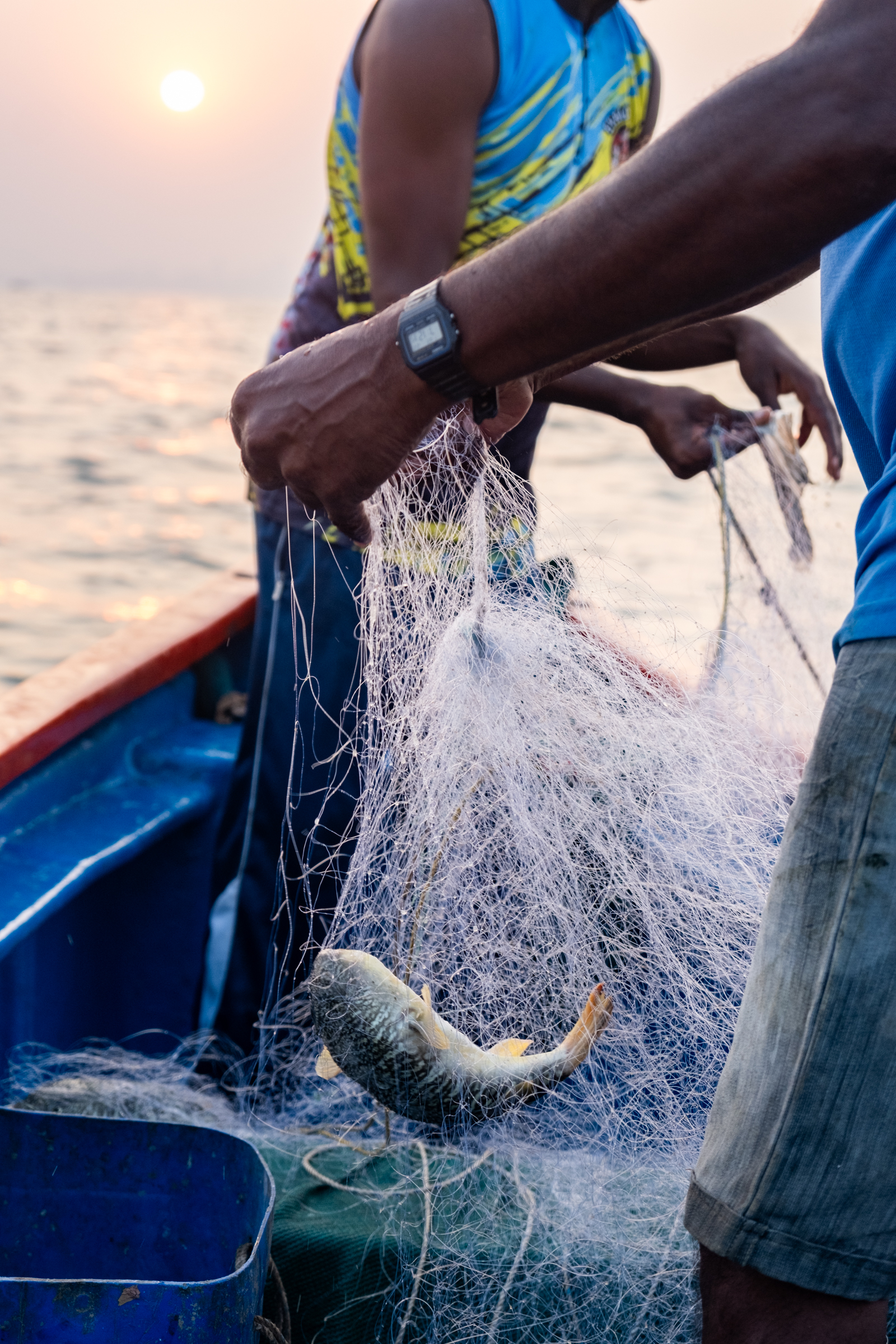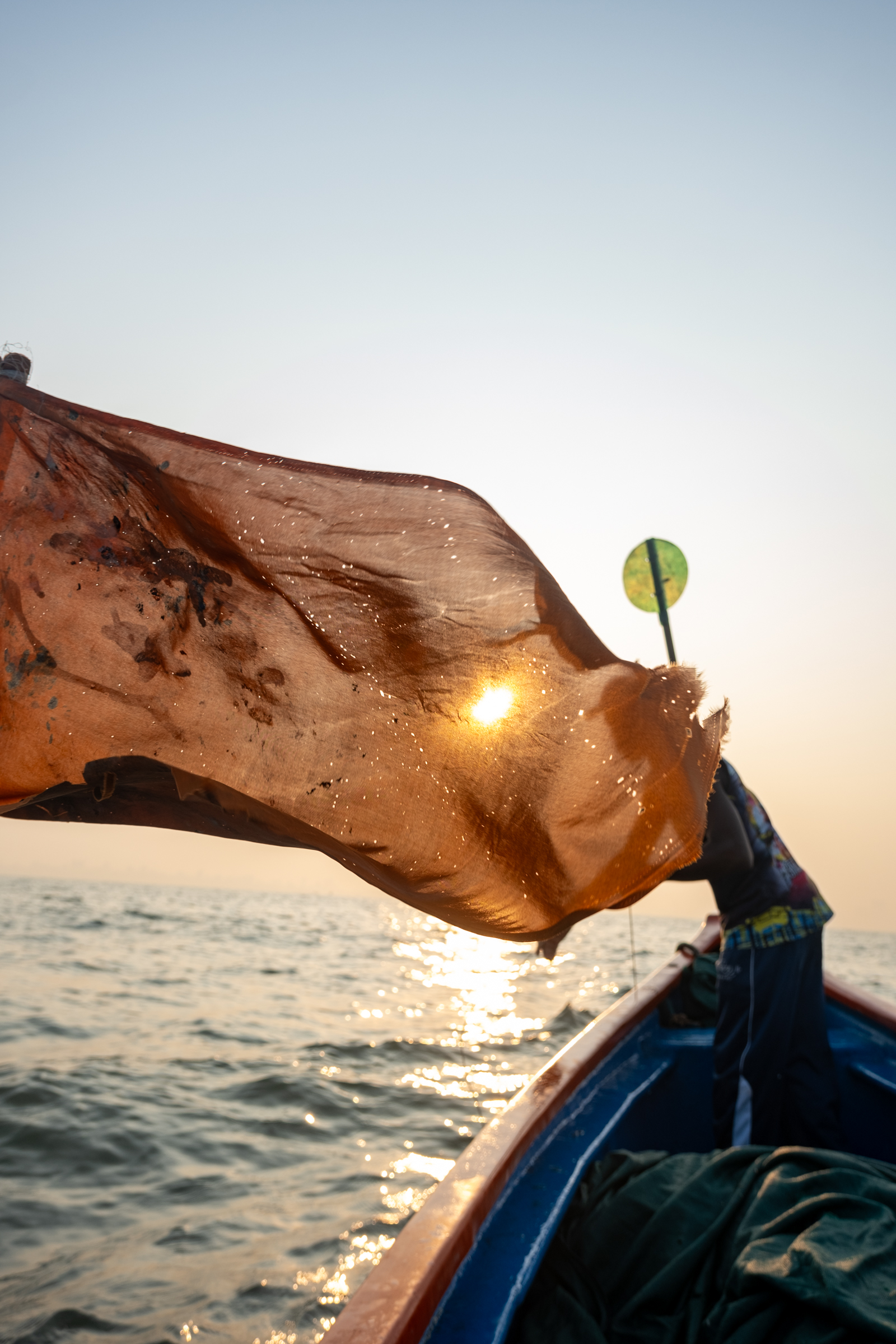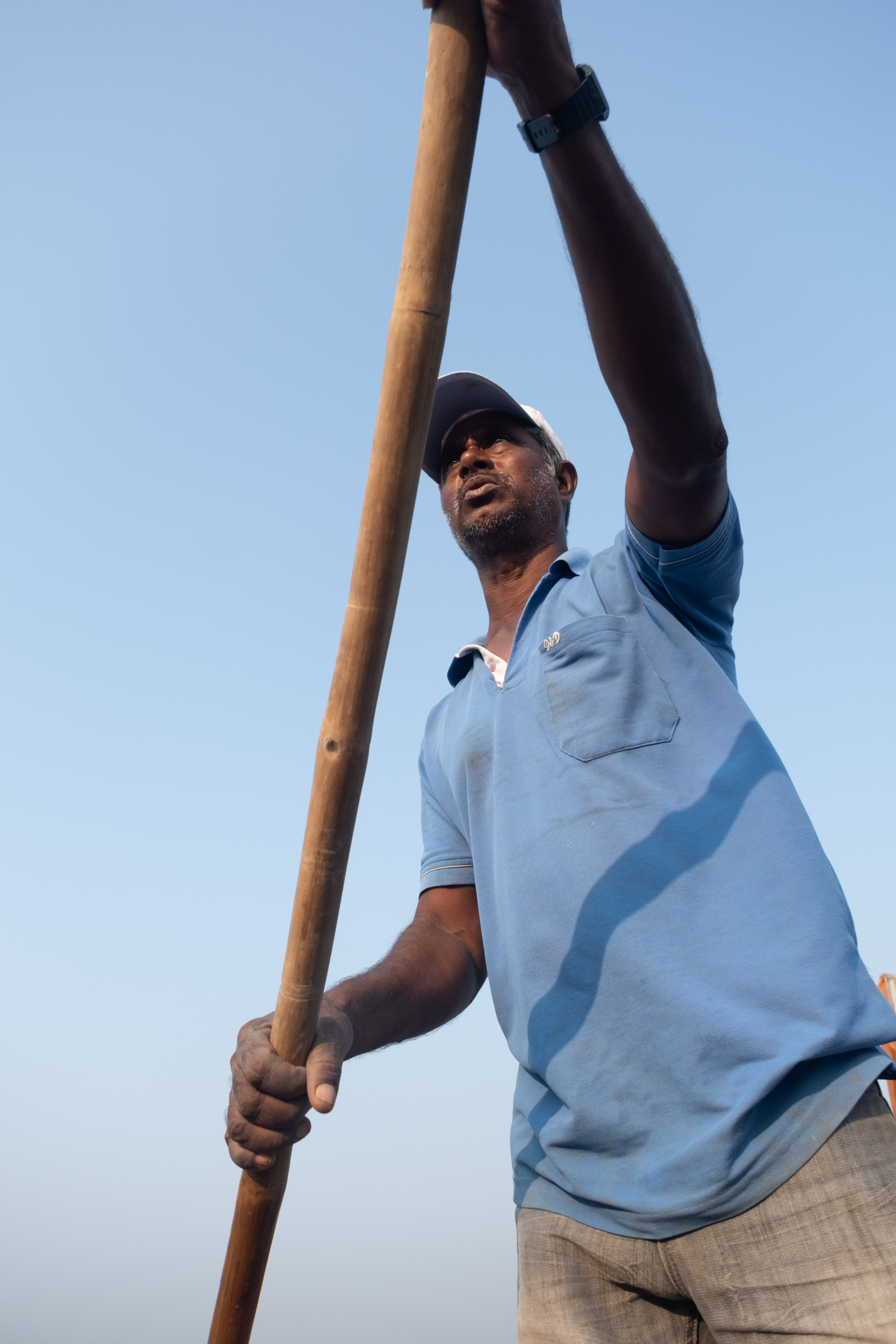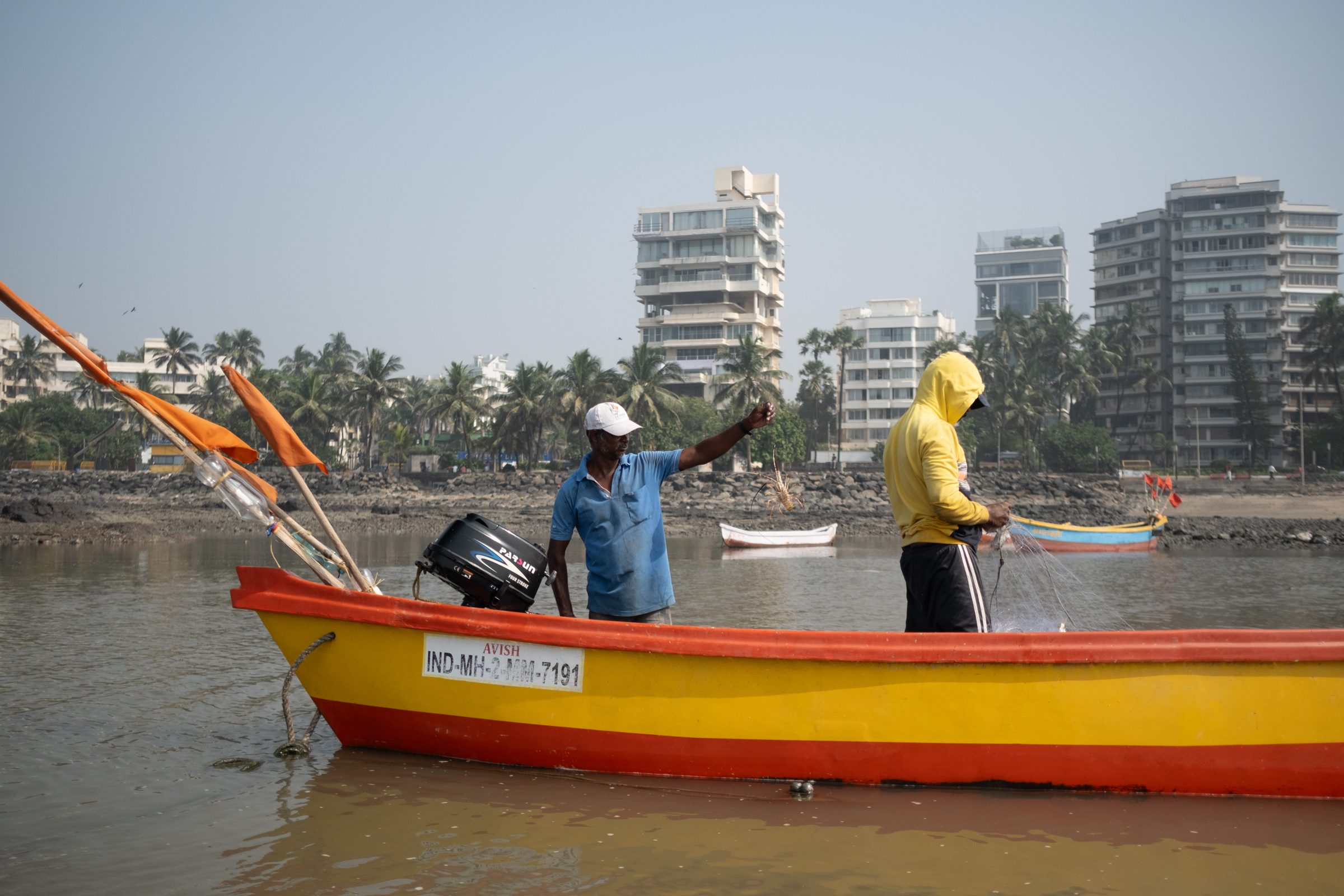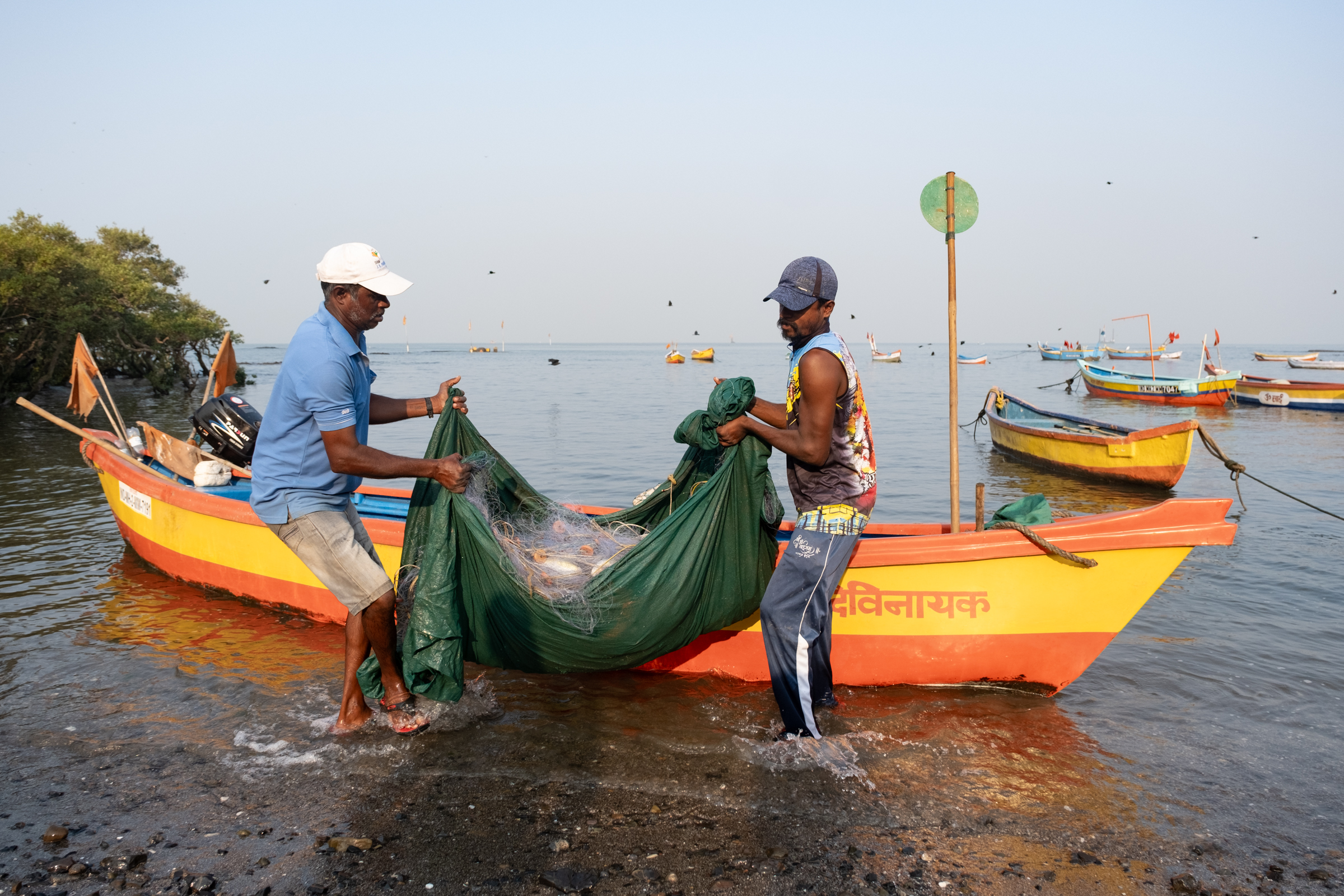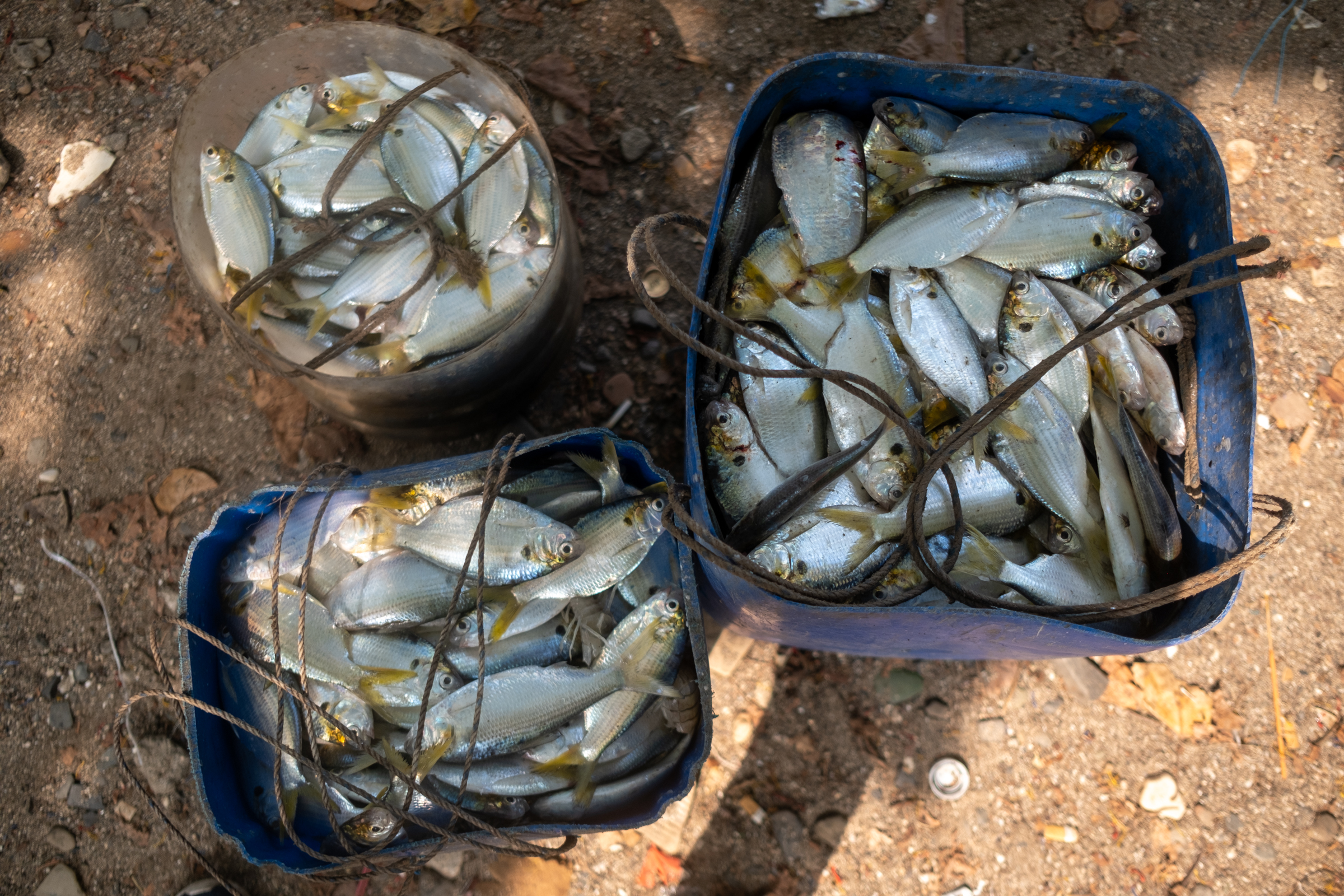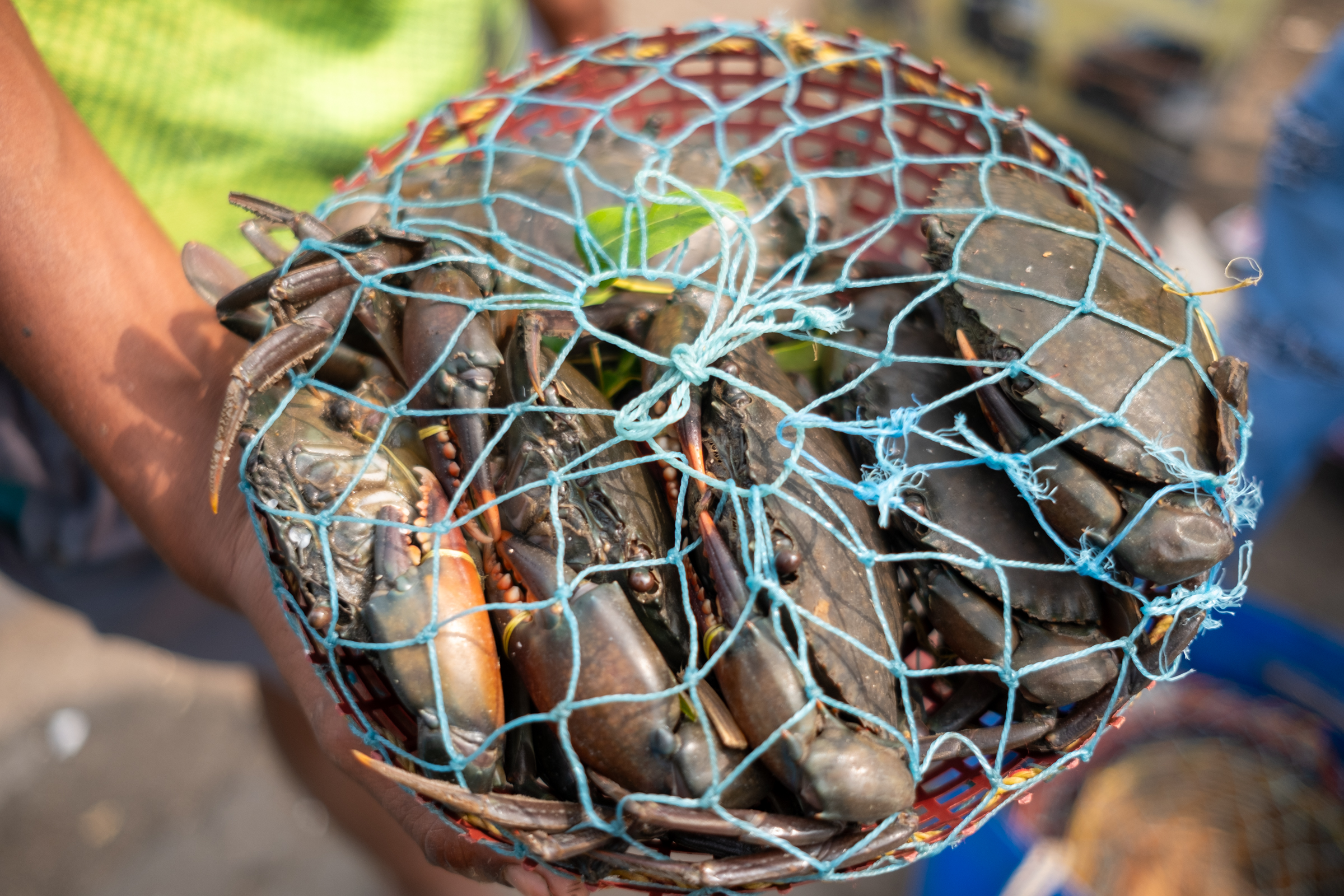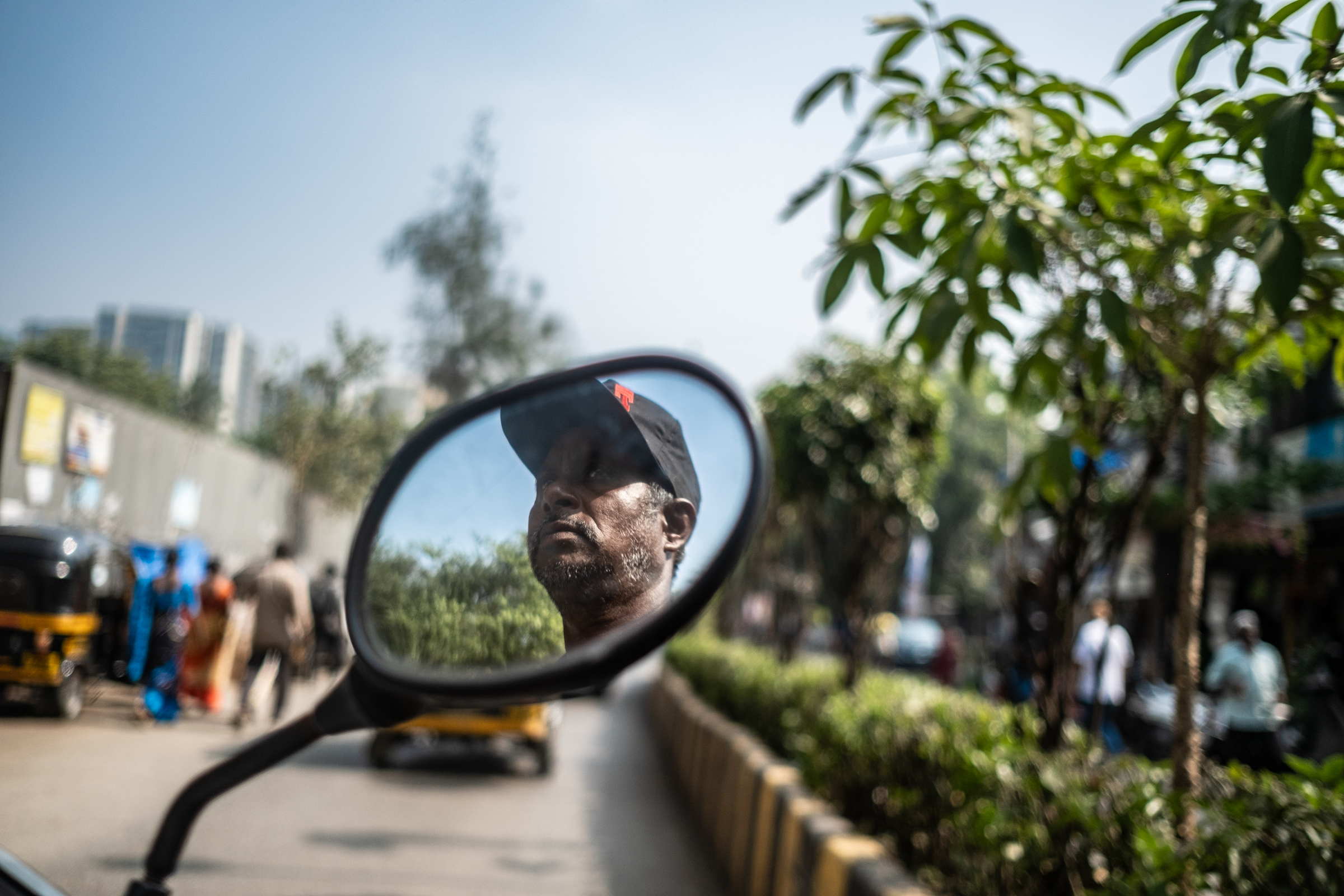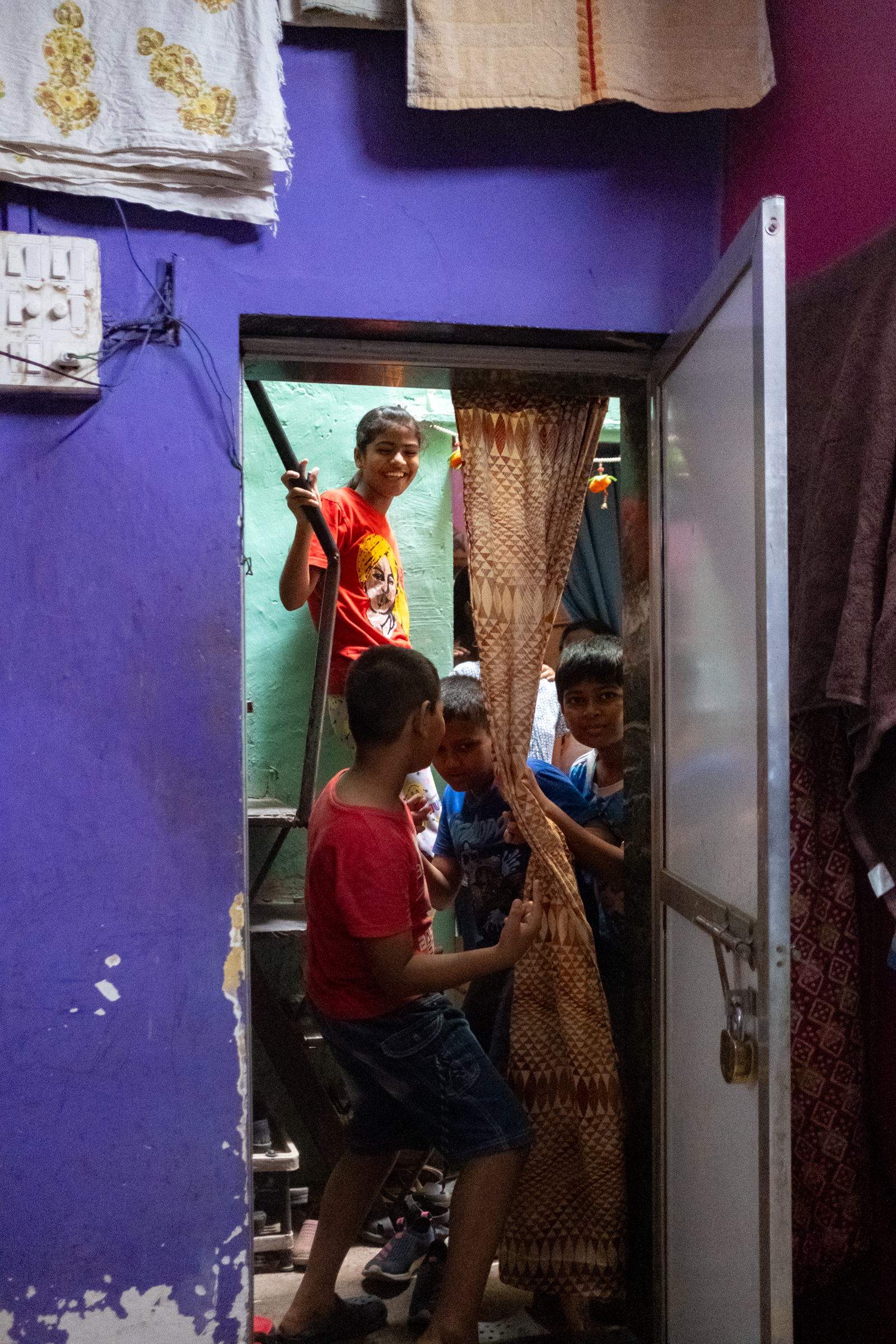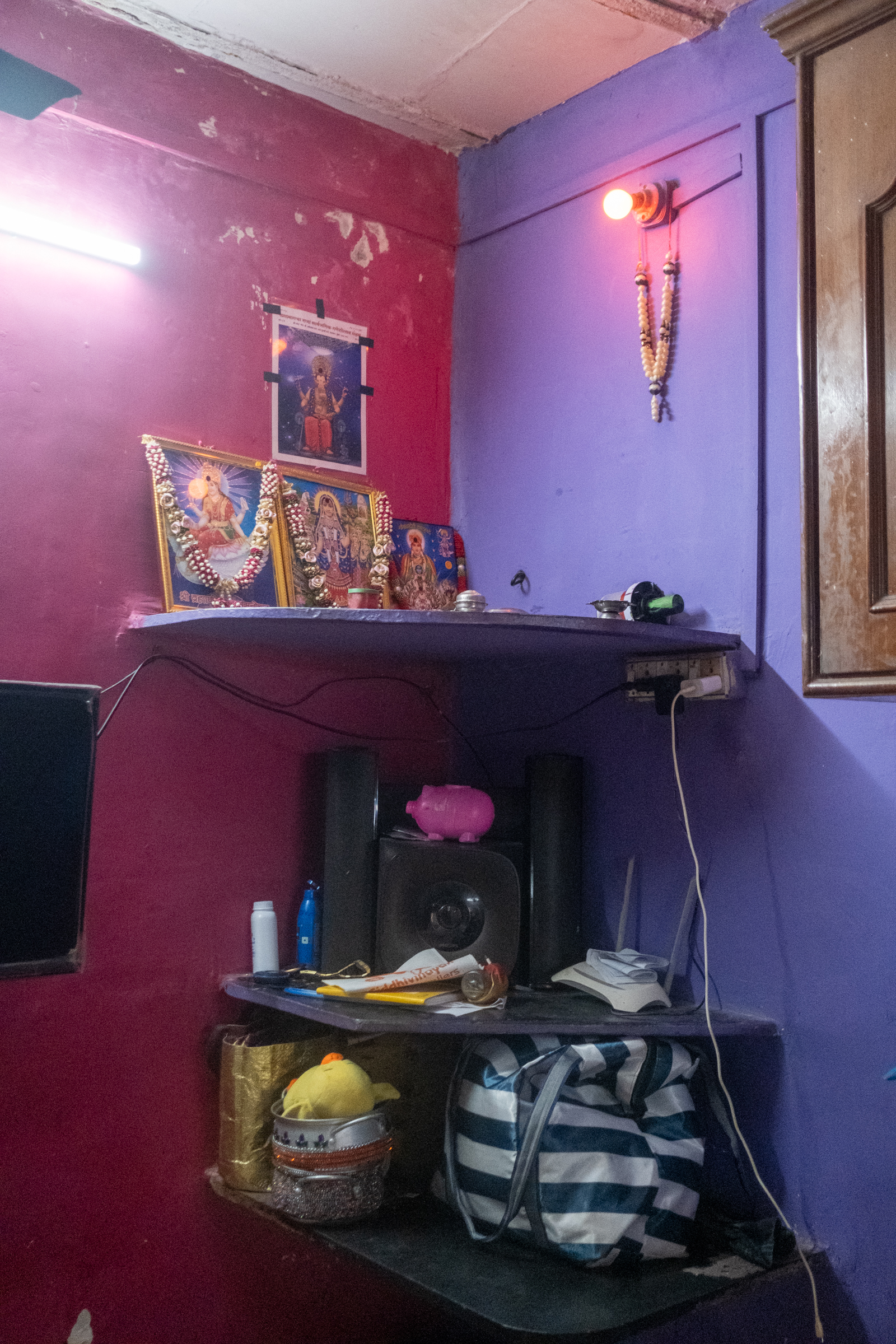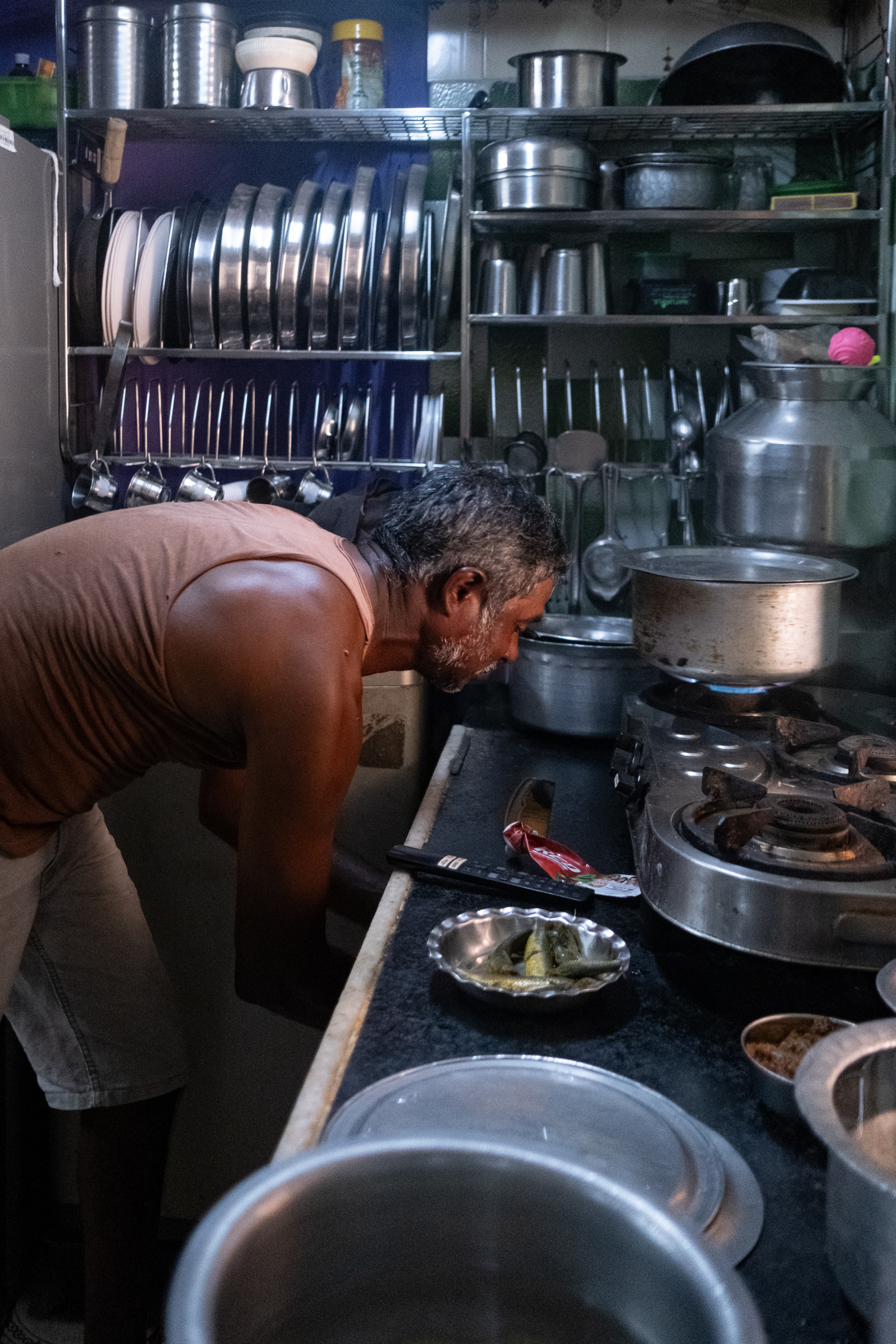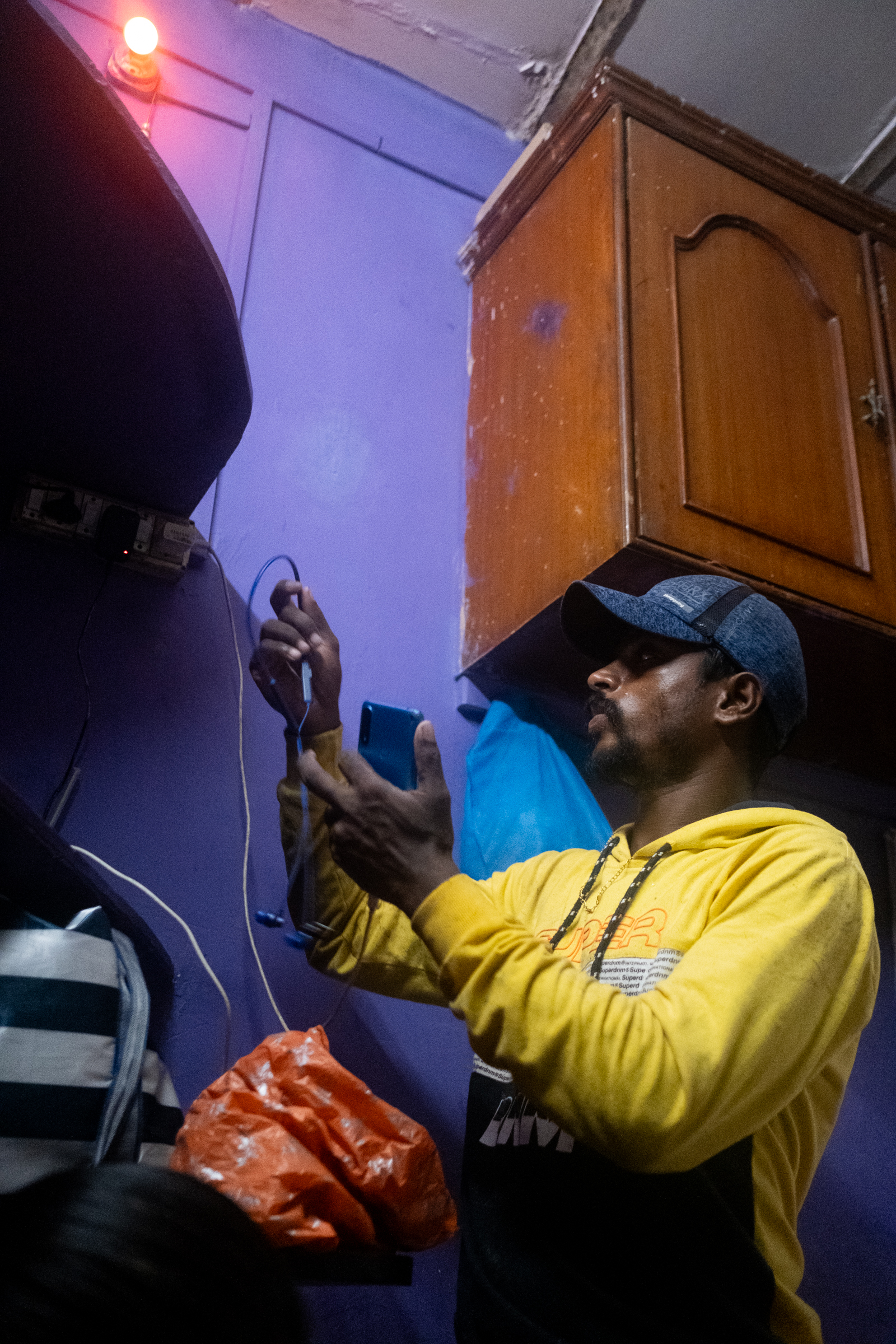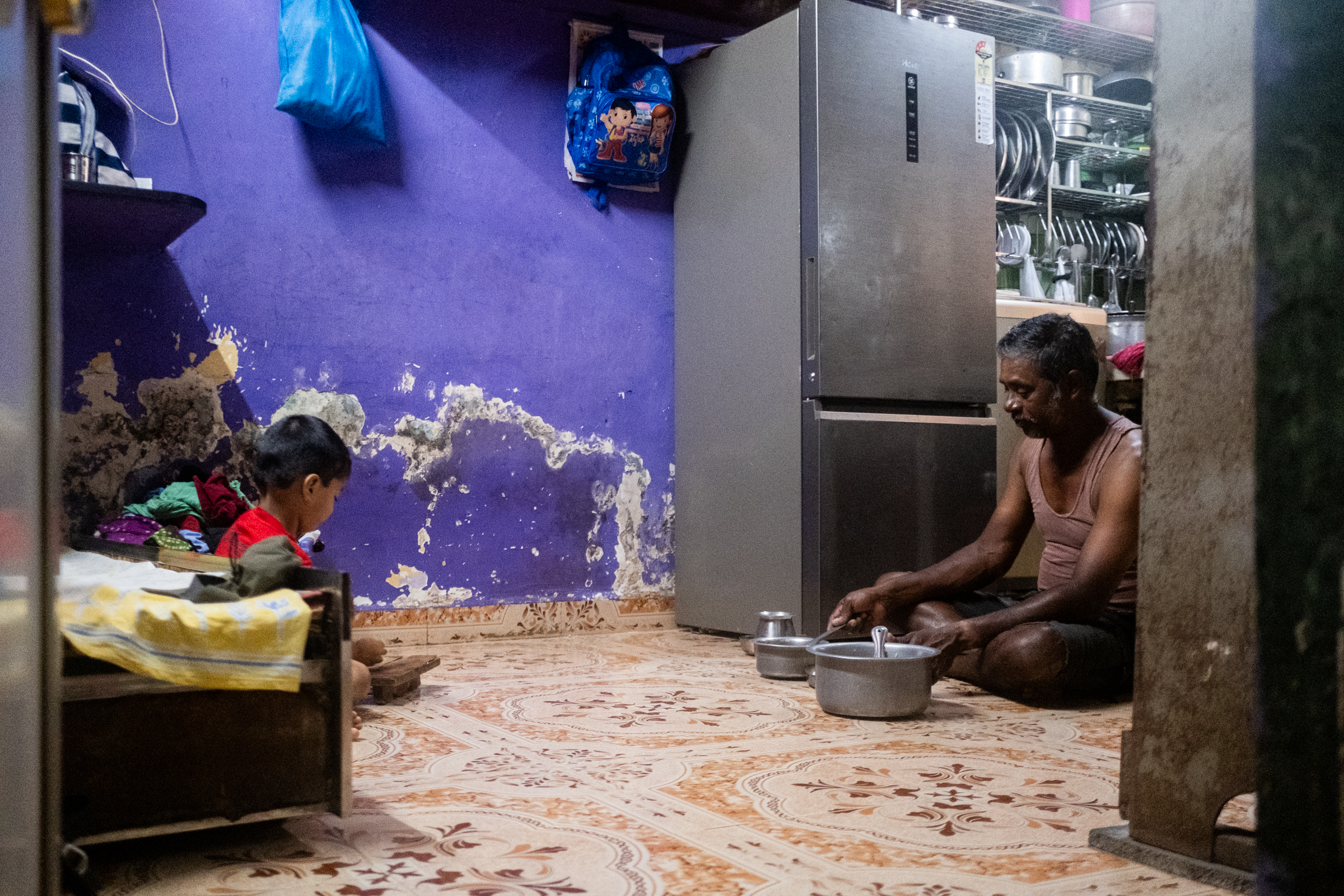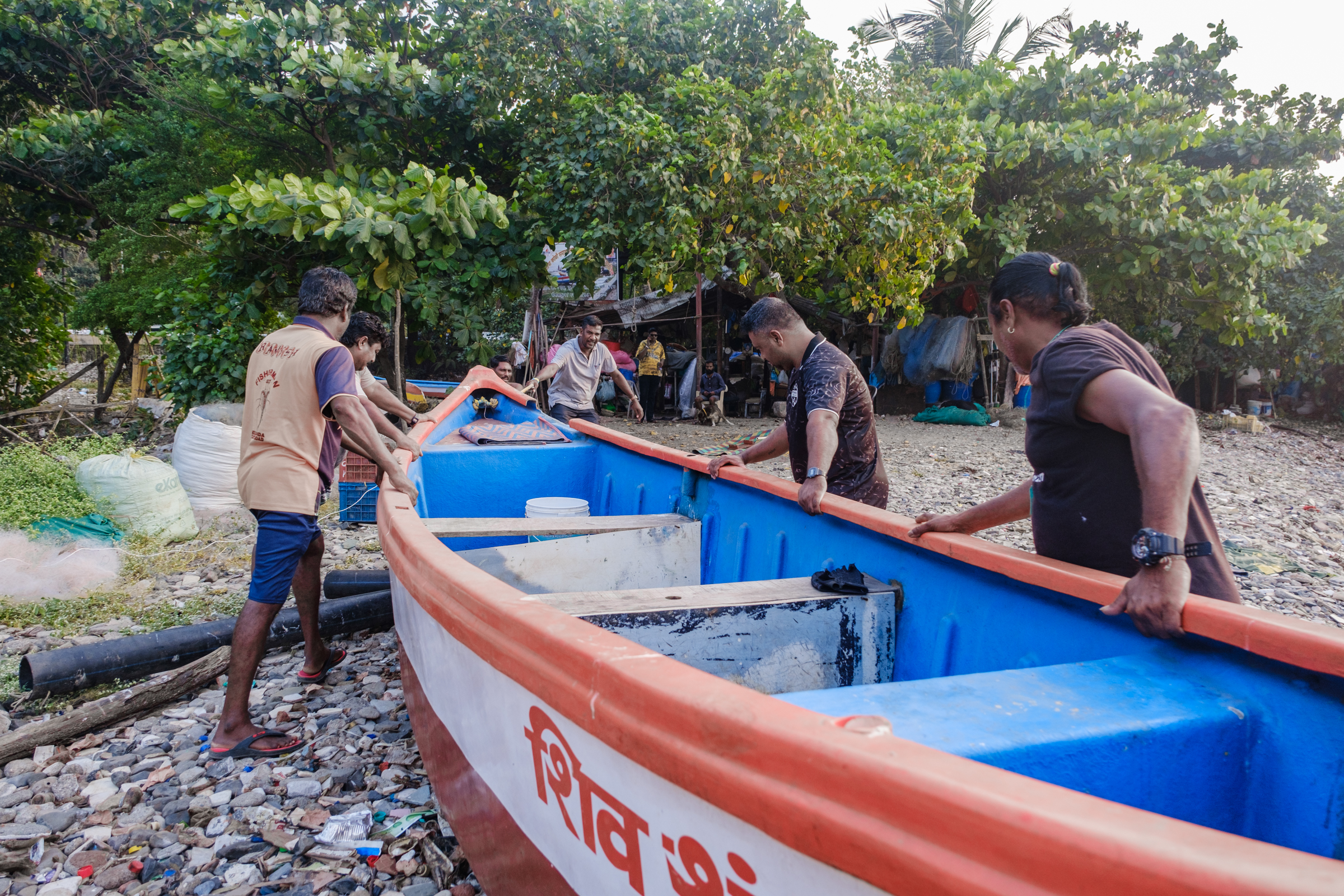Fishing Through the Generations: A Father-Son Story from Khar Danda
Khar Danda Koliwada, a traditional fishing village, is located in the Khar area, which is part of the larger Bandra neighbourhood in Mumbai's western suburbs. It is situated along the Arabian Sea coast, providing direct access to the sea for fishing activities. The Koli community, known for its centuries-old fishing traditions, constitutes the primary inhabitants of Khar Danda Koliwada. The Bhalia family, like most Koli families living in Khar Danda, relies on fishing as their primary source of income. Rakesh Bhalia, a Gujarati Koli born and raised in Khar Danda, has been a fisherman for 35 years. His weathered hands and tanned skin tell a story of hard work and determination. His 26-year-old son, Rahul, has inherited the family tradition, learning the tricks of the trade from his father and other experienced fishermen in the community.
Fishing operations involve teamwork, and Rakesh and Rahul comprise a two-member team. The father-son duo heads out to sea around 4 to 5 am, depending on the tide and weather conditions. Some Koli fishermen engage in night fishing, particularly for species that are more active at night, like crabs. In such cases, they leave in the evening and return early the next morning. The primary fishing season typically runs from September to May, with boats spending more time at sea due to favourable weather and sea conditions. The fishing season typically winds down by the end of May as the monsoon approaches. Rough sea conditions from June to August halt traditional fishing activities. This period is critical for breeding many fish species. During this time, fishermen undertake boat maintenance, repair fishing nets, or find alternative livelihoods. In August, Khar Danda and other Koliwadas in Mumbai celebrate Narali Purnima, marking the start of the new fishing season, where fishermen offer coconuts to the sea gods for a bountiful and safe season.
Preparations for a fishing expedition typically start early in the morning, when it is still dark. Meticulous planning and attention to detail are crucial for a successful fishing expedition. First, they check the weather forecast to ensure safe sea conditions, avoiding adverse weather, such as storms or rough seas. Understanding tidal movements is essential for planning the best times to fish and navigate safely. Rakesh ensures that the engine and other mechanical parts are in excellent working condition, inspecting the boat’s hull for any damage or leaks and making necessary repairs. He also checks the fishing nets, lines, and other equipment for holes or tears, as well as fuel levels, ensuring there is enough fuel for the journey and carrying extra fuel for longer trips. Rahul charges all communication devices, like radios and mobile phones, in case of an emergency, and packs sufficient food and drinking water for the trip.
Rahul began fishing at the age of 10, having dropped out of school to help his father. Over the years, Rakesh passed on his knowledge to his son, which he learnt from his father. While Rakesh handles navigation, Rahul manages the nets. Once they reach their designated fishing zone, he deploys several nets over a large area. For several hours, they wait for the nets to catch fish. When fish are abundant, they might return sooner; when scarce, they may spend more time searching for a worthy catch. The amount of time spent also depends on the fishing technique used and the type of fish they aim to catch. Rahul hauls the nets onboard after four to five hours, checks the catch, and discards any unwanted or accidental catch. They typically return to the dock by late afternoon, around 2 to 3 pm, unload their catch, and prepare it for the market.
Once ashore, they sort the fish based on species, size, and quality, placing it on ice to maintain its freshness. Icing is crucial in preventing spoilage, especially in Mumbai’s warm, humid climate. Koli fisherwomen are often responsible for cleaning, sorting, and processing the fish caught by their male counterparts. The landing centres transport the sorted and iced fish to auction halls, typically hosting early morning auctions. Licensed auctioneers or agents facilitate the bidding process, ensuring fair prices and efficient sales. The primary bidders include wholesalers, fish vendors, and representatives from fish processing companies and export houses. Wholesalers purchase fish in large quantities at the auction.
After the auction, wholesalers transport the fish to distribution centres, which can be local markets or larger hubs such as Crawford Market, Dadar Market, Colaba Market, and Danda Market. Retail vendors, often women from the Koli community, purchase fish from the wholesalers. They sell the fish at local markets or as mobile vendors in residential areas, adeptly negotiating prices and managing sales, contributing significantly to the family income. Some retailers purchase fish directly from landing centres or wholesalers and sell them in their shops. Larger supermarket chains have agreements with wholesalers to supply fresh fish regularly.
Small-scale fishermen face numerous difficulties and challenges in sustaining their fishing business. Their income varies based on the season, catch size, and market prices. Fluctuations in fish prices and the cost of fishing gear and maintenance put financial strain on small-scale fishermen. Limited access to larger markets and fair-trade opportunities hampers their ability to get fair prices for their catch. Large commercial fishing operations with advanced technologies and bigger boats outcompete small-scale fishermen, reducing their share of the catch.
Furthermore, overfishing and environmental degradation have led to a decline in fish stocks, making it harder for small-scale fishermen like Rakesh and Rahul to earn a profit. Fish stock depletion also necessitates longer hours at sea. On average, the father-son duo might spend between 40 and 60 hours a week at sea during the peak fishing season. Industrial effluents, sewage, and plastic waste have severely polluted the coastal waters of Mumbai, affecting fish populations and the health of marine ecosystems. Additionally, eroding coastlines, caused by climate change-induced sea-level rise, pose a threat to coastal fishing communities, including the Kolis. Changes in weather patterns, as well as more frequent extreme weather events, disrupt fishing schedules and endanger fishermen at sea. Adverse weather can also reduce the number of fishing days, as safety is a priority.
The Koli community preserves its rich maritime heritage and fishing knowledge for future generations through family-based learning, hands-on training, and oral traditions. This intergenerational knowledge transfer is critical for sustaining their livelihood as well as reinforcing their cultural identity and community bonds. Unfortunately, younger generations of Kolis may be less interested in continuing the traditional fishing practices, leading to a loss of traditional knowledge and skills. The scarcity of alternative employment opportunities forces many Koli fishermen to remain in the fishing industry, despite its declining viability. Despite the numerous challenges they face, small-scale fishermen like Rakesh and Rahul Bhalia continue to remain resilient through the hard work and dedication required to sustain their traditional livelihood in the face of changing environmental and economic challenges.
Rahul Bhalia, a 26-year-old resident of Khar Danda Koliwada, a fishing village, assists his father, Rakesh Bhalia, in running fishing operations. Rahul and his father operate a small boat instead of working on larger trawlers. While trawlers offer safety and extended time at sea, they come with high operational costs. The father-son duo's preference for a small boat allows them to operate at lower costs.
Rahul Bhalia had a strong interest in fishing from an early age. He dropped out of school to join his father at sea when he was just 10 years old. Knowledge transfer in the Koli community primarily occurs within families, where parents, particularly fathers, teach their children about fishing. From a young age, children accompany their fathers on fishing trips, observing and gradually participating in various activities.
The fishing season in Mumbai is primarily from August to May, with a significant break during the monsoon months of June and July for both safety and sustainability reasons. The Koli fishermen and other fishing communities adhere to these seasonal cycles and regulations to ensure the continued health and productivity of their fishing grounds.
A typical fishing day starts early in the morning, often before dawn, while it is still dark. Only local fishermen can fish in designated areas, protecting their traditional fishing rights and practices. Proper licenses and permits are required to engage in fishing activities. This regulation helps control the number of fishing vessels and manage fish stocks effectively.
The ebb and flow of tides, along with the changing seasons when certain types of fish are available, dictate the catch. Most fishermen use vertical nets, called gill nets, that trap fish by their gills. After laying the nets, the boats wait for four to five hours before hauling them back on board.
The main fishing season in Mumbai begins after the monsoon rains, usually in August, when the seas are calmer and safer for fishing. The peak fishing season runs from September to April, during which the weather is favourable and fish populations are abundant due to the nutrients that the monsoon washes into the sea.
Larger fishing vessels (seen in the backdrop) often use industrial methods to catch fish. The boats, called trawlers, drag large nets, known as trawls, behind them. Bottom trawls are for fish near the seabed, and midwater trawls are for fish in the middle of the water column. Trawlers capture large quantities of fish, including shrimp, mackerel, and anchovies.
Flags and brightly coloured floats mark the fishing area. The size and type of net may vary depending on the boat size and the crew’s hauling capacity. Most fishermen operate small boats, which can accommodate a maximum of two or three people. These boats typically place four to five nets in one area.
Rakesh Bhalia has been a fisherman for 35 years. Prior to running a motorboat, he operated paddle boats with wooden oars. He still relies on oars when navigating through mangroves and shallow waters near the shore. Underwater rocky outcrops can easily damage a wooden boat if not navigated carefully.
The boat’s bright colours make it easy to spot at sea. Each boat has a unique name, often including the owner’s name and registration number. Small boats usually have a powerful motor, which provides power to steer the boat at sea.
Koli fishermen bring freshly caught fish to designated landing centres, such as fishing docks, harbours, or beaches. Once ashore, the fishermen or their family members typically sort the fish based on their species, size, and quality.
The sorted and iced fish are taken to auction halls at the landing centers. Auctions usually take place early in the morning, facilitated by licensed auctioneers or agents who ensure fair prices and efficient sales. The primary bidders include wholesalers, fish vendors, and representatives from fish processing companies and export houses.
Wholesalers purchase fish in large quantities at the auction and often maintain established relationships with fishermen and auctioneers. After the auction, they transport the fish to distribution centres, which can be local markets or larger hubs.
On days when fishing is not possible, Rahul Bhalia takes advantage of the tidal movements to catch fish in shallow creeks and mangroves. Fishermen set traps or barriers in tidal zones and collect the catch as the tide recedes. This method particularly targets mud crabs, commonly found in mangroves.
After a nine-hour shift, Rakesh Bhalia finally heads home to rest. Fishermen typically set out to sea around 4 to 5 am and return by late afternoon, around 2 to 3 pm. His residence is situated in a cluster of small lanes in Khar Danda Koliwada, just a kilometre from the coast.
Though the living quarters are small, one can feel the warmth that permeates closely-knit Koli homes. In Koli households, the concept of closed doors is virtually nonexistent. Neighbourhood children frequently visit and play, creating an atmosphere where the entire community feels like one big, extended household.
The most important part of the house is the shrine of the kuladevata (male clan deity) or the kuladevi (female clan deity). Kuldevatas protect one’s kula (clan), gotra (lineage), family, and children from misfortune. The shrine also features an image of Ganapati, a universally worshipped Hindu deity across Maharashtra.
Koli fishermen are the family’s breadwinners, but they also do housework, especially when the wife is away or unavailable. In addition to their domestic duties, Koli fisherwomen manage various outdoor activities, such as taking processed fish to local markets or selling them as mobile vendors in residential areas, contributing significantly to the family income.
While his father prepares food for the family, Rahul Bhalia prepares for the next day’s venture. Rahul makes sure to fully charge their phones, along with all other battery-operated equipment, as they serve as their only means of communication with the coast in case of sea danger.
During meals, Rakesh Bhalia engages and plays with his grandson. Their daily food typically includes rice, curry, and fish. However, they refrain from consuming fish or any other type of meat on Tuesdays.
Rakesh and Rahul Bhalia have limited time to spend with their family due to their busy fishing schedule. During the peak fishing season, Koli fishermen typically spend between 40 and 60 hours a week at sea, often observing one or two rest days each week. Some engage in night fishing, departing in the evening and returning early the next morning.
After a brief stint at home, Rakesh and Rahul Bhalia return to the coast to prepare for the next fishing expedition. They meticulously clean the boat, removing debris to ensure a clean working space. They inspect and repair fishing nets, lines, and other equipment to ensure they are undamaged. Rakesh crafts a new oar in the photo to replace the worn-out one.
Fishing is a collaborative effort within the community. Rakesh inspects the boat’s hull for any damage or leaks and makes necessary repairs. He ensures the engine and other mechanical parts are in optimal condition. Before launching the boat, he assigns tasks and clarifies roles to ensure smooth operations.
